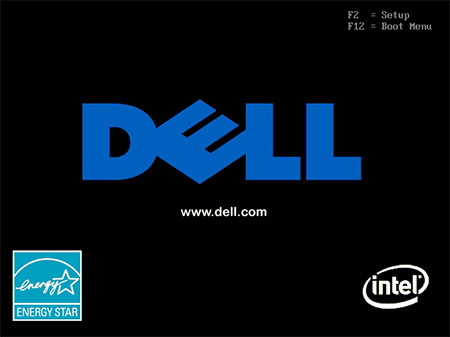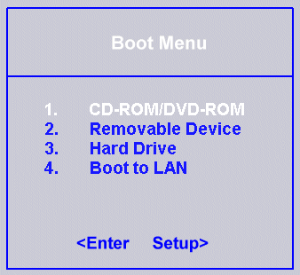Get the fix for the error Disk Boot Failure on Windows XP, Windows Vista, Windows 7, Windows 8 and Windows 10.
Contents
About “Disk Boot Failure“
The following information on this error has been compiled by NeoSmart Technologies, based on the information gathered and reported by our global network of engineers, developers, and technicians or partner organizations.
Description and Symptoms
The error messages, alerts, warnings, and symptoms below are tied to this error.
Symptom 1: “Disk Boot Failure” error screen on startup
Every time a computer is turned on, as part of the boot process the BIOS tries to find a bootable drive to continue the loading process by starting its first sector. However, if BIOS is unable to find a drive to boot from, then a “Disk Boot Failure” error screen is displayed and the boot process is halted.
Here is an example of “Disk Boot Failure” error screen for all versions of Windows:
DISK BOOT FAILURE - INSERT SYSTEM DISK AND PRESS ENTER
Causes of this Error
This error has been known to occur as a result of one of the following causes:
Cause 1: Incorrect BIOS boot order
The most common cause of this error is an incorrect order of boot devices in BIOS. Usually BIOS tries to find a bootable drive according to its boot device order, so if a PC has a floppy drive set to a higher priority than a hard drive, and there is a floppy disk inserted – then the PC tries to boot from a floppy disk, and a error message is displayed.
Cause 2: Faulty data cables
Like all components of our PC’s, hard drive data cables tend to deteriorate as the time passes. If the same data cable was used for several years(or even the same one across several computers), then it might me the cause of periodic read/write errors that can affect the loading process.
Cause 3: HDD is damaged
A hard drive can become damaged or inaccessible due to read/write errors, power outages, or virus attacks. If that’s the case, then the drive should be checked for errors and scanned for viruses to make sure that it works correctly.
Fixing “Disk boot failure” on Windows
Fix 1: Change BIOS boot order
To check a computer’s boot order, follow these instructions:
- Restart the computer
- Open the BIOS. If you’re not sure which key is used to open BIOS, it’s either any of the following or it’s listed on the first screen that appears on the monitor, before the Windows logo appears.Possible keys: Esc, Del, F2, F8, F10 or F12

Notice the key guide in the top-right corner.
- Go to the Boot tab
- Change the order to position the hard disk as the 1st option

Boot Selection Menu
- Save these settings
- Restart the computer
Fix #2: Remove newly installed hardware, check data cables and jumpers
If a new hardware was recently added , follow these tips:
- Remove the newly added hardware and restart the computer to check if the error still appears
- Check the cables of the hard disk where Windows is installed
- Check the jumpers of the hard disk
Fix #3: Check HDD for failures
To test if the hard disk has failed, use Easy Recovery Essentials’ Automated Repair. The Automated Repair process will report any issues found with the hard disk or RAM memory with one single click:
- Download Easy Recovery Essentials
- Burn the ISO Image. Follow our instructions on how to burn a bootable ISO image. If you’d like to have a recovery USB instead, follow our instructions on how to make a recovery USB.
- Boot into Easy Recovery Essentials
- Select Automated Repair
- Click Continue and wait for the Automated Repair process to finish. Automated Repair process will report any issues found with your hard disk or RAM memory:

To download Easy Recovery Essentials, click here.
Fix #4: Run chkdsk
The chkdsk utility can detect if the computer’s hard disk has certain issues.
If a PC has Windows XP installed, follow these steps to start chkdsk:
- Insert a Windows XP CD into the computer.
- Restart the computer.
- Press any key to boot into the CD when you see the “Press any key to boot from CD” message.
- Press R to start Recovery Console when the Options screen appears.
- Choose the Windows installation to be repaired, and type in the Administrator password followed by the Enter key to submit it.
- Type the following command, and press Enter : to submit it:
chkdsk C: /R
Where C: is the Windows installation drive
- Wait for the scanning process to end, and restart the computer.
Here is an example screenshot of what the PC’s console output should look like once the chkdsk is complete:
If a PC has Windows Vista, 7, 8 or 10 installed, follow these steps instead:
- Boot from a Windows install disc
- Click on Repair your computer after selecting proper language, time and keyboard input.
- Select the Windows installation drive, which is usually
C:\, and click Next - Choose Command Prompt when the System Recovery Options box appears
- Write the following command and press Enter afterwards:
chkdsk C: /f
Replace C: with the letter of the driver where Windows is installed.
Here is an example of what the PC’s console output should look like once the chkdsk.exe is complete:
More Information
Linked Entries
Support Links
- Easy Recovery Essentials for Windows – our repair and recovery disk.
It’s an easy-to-use and automated diagnostics disk. It’s available for Windows 8, Windows 7 and Windows Vista. It’s also available for Windows XP and Windows Server.Read more at Windows Recovery Disks.
- The NeoSmart Support Forums, member-to-member technical support and troubleshooting.
- Get a discounted price on replacement setup and installation discs: Windows XP, Windows Vista, Windows 7, Windows 8, Windows 10.
Applicable Systems
This Windows-related knowledgebase article applies to the following operating systems:
- Windows XP (all editions)
- Windows Vista (all editions)
- Windows 7 (all editions)
- Windows 8 (all editions)
- Windows 8.1 (all editions)
- Windows 10 (all editions)


